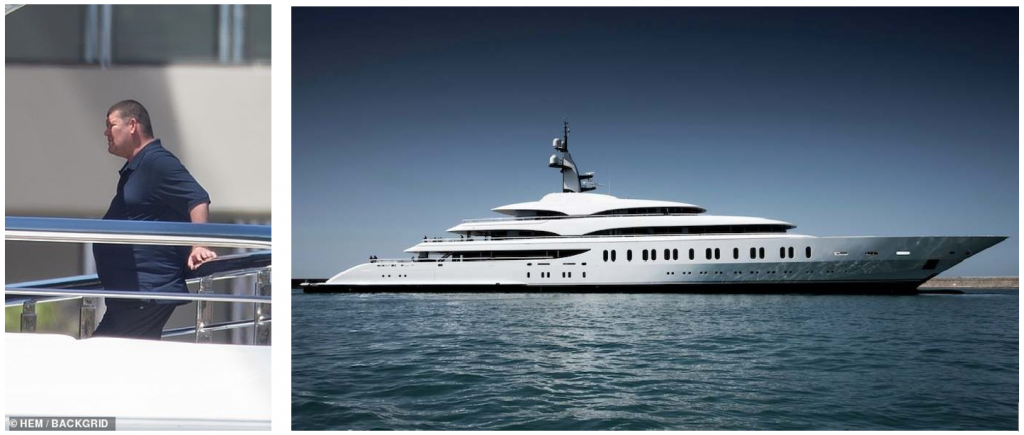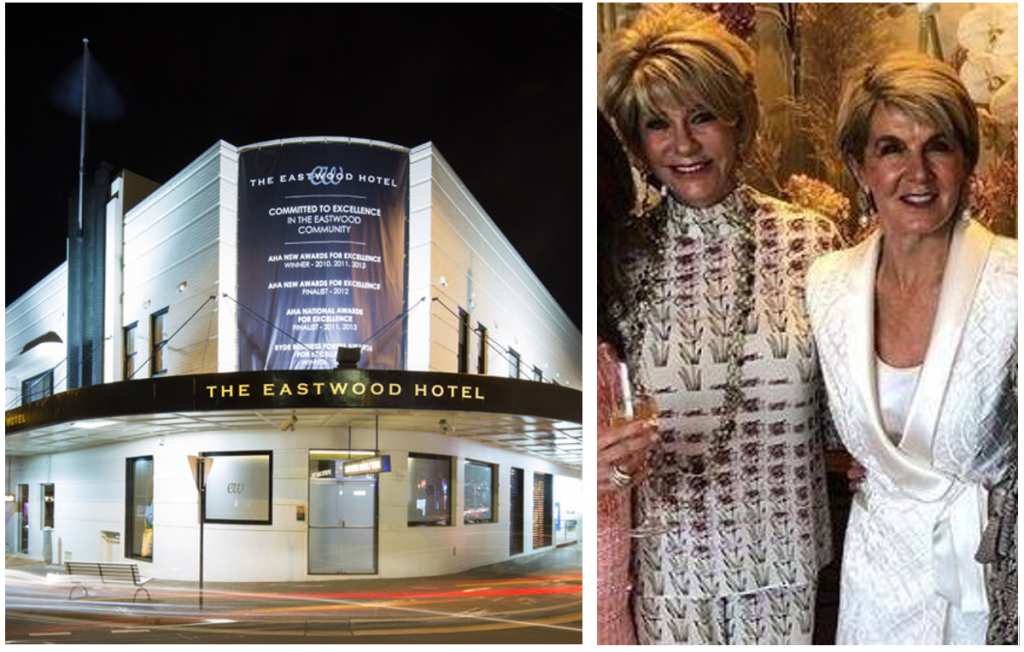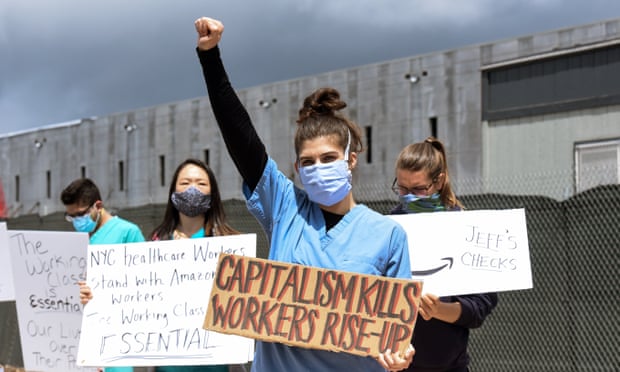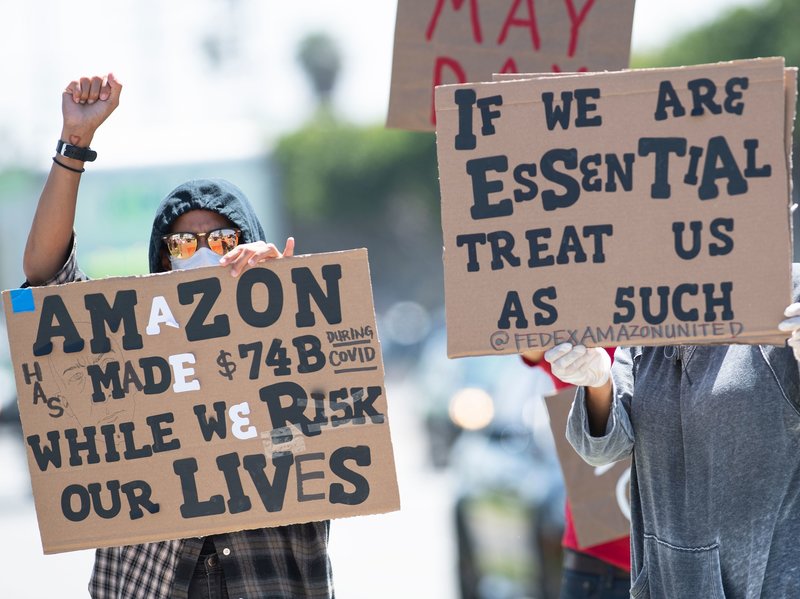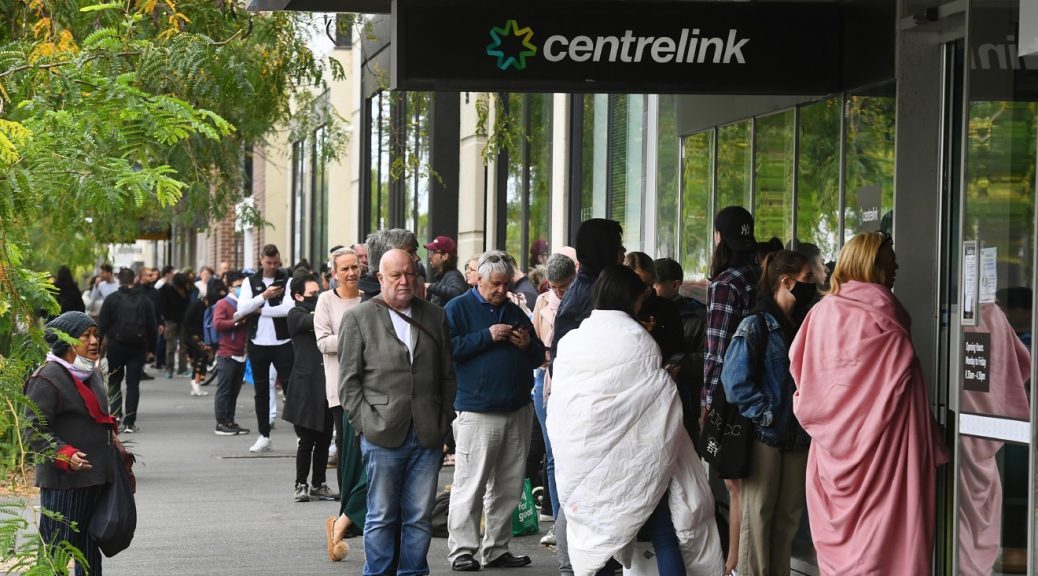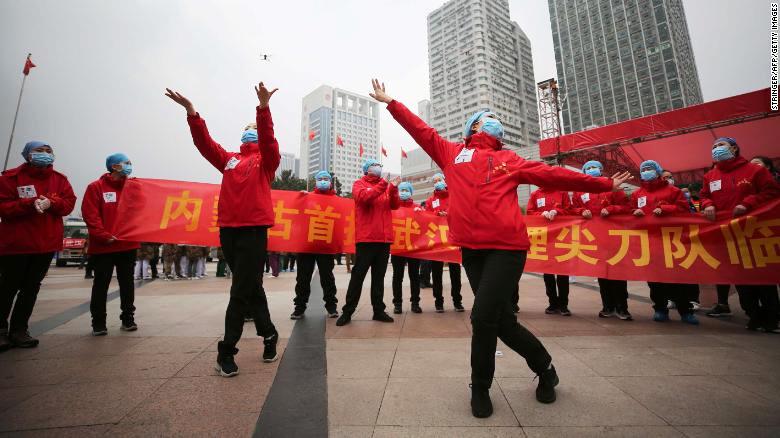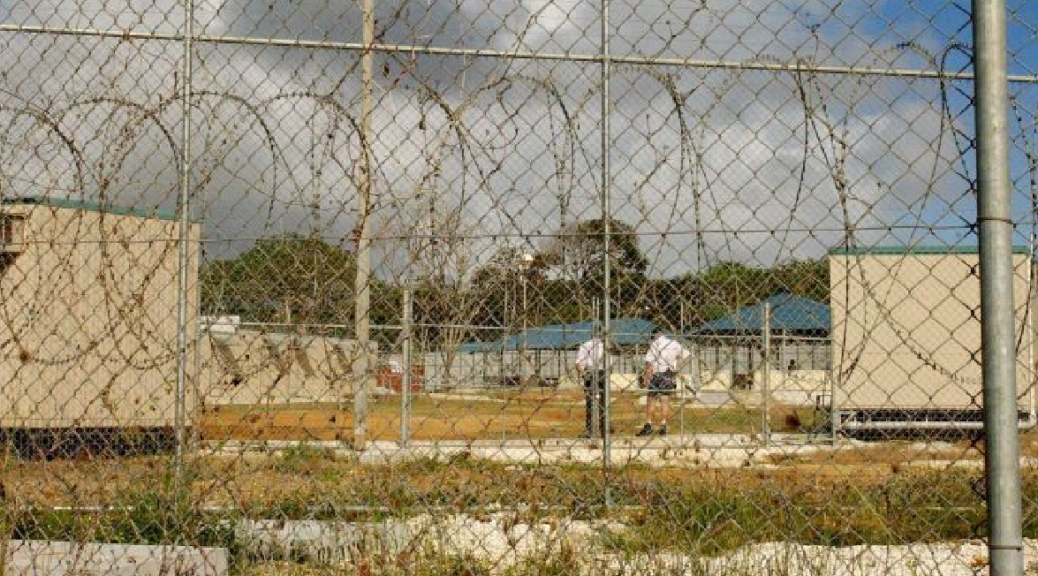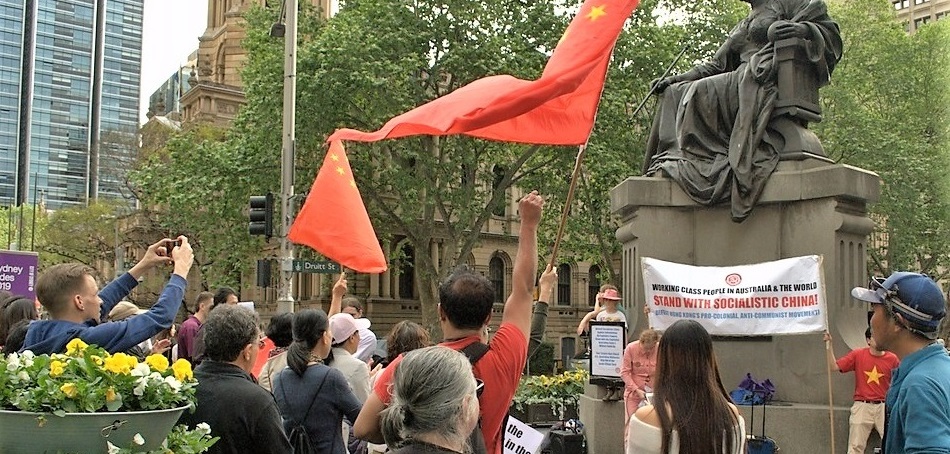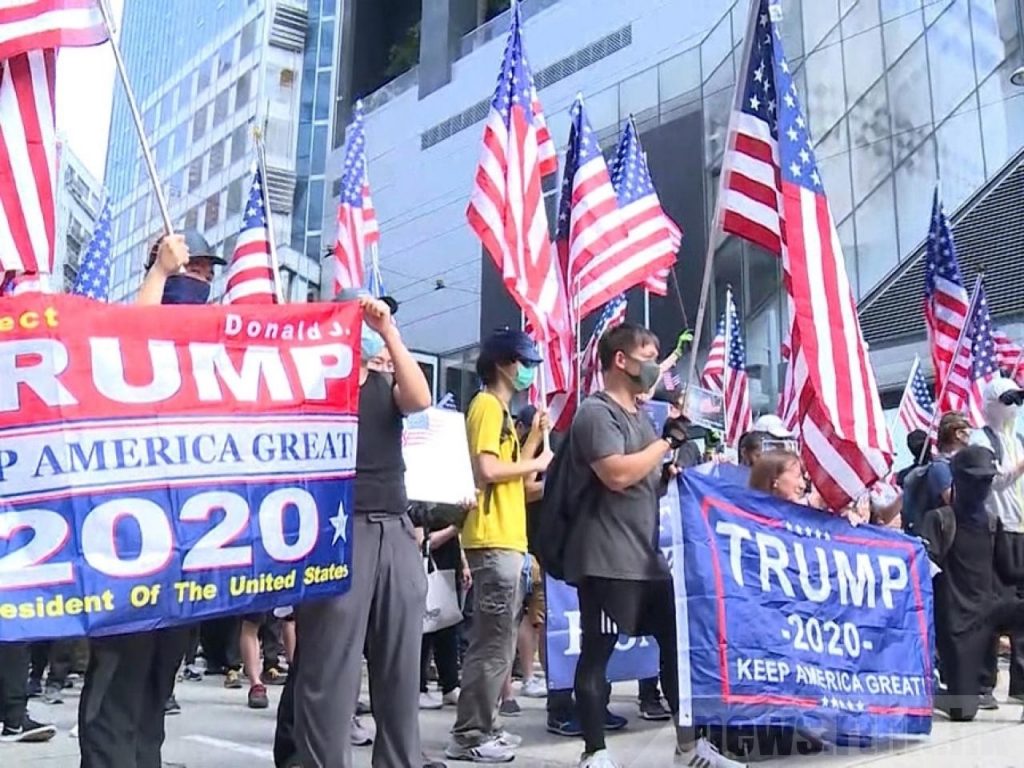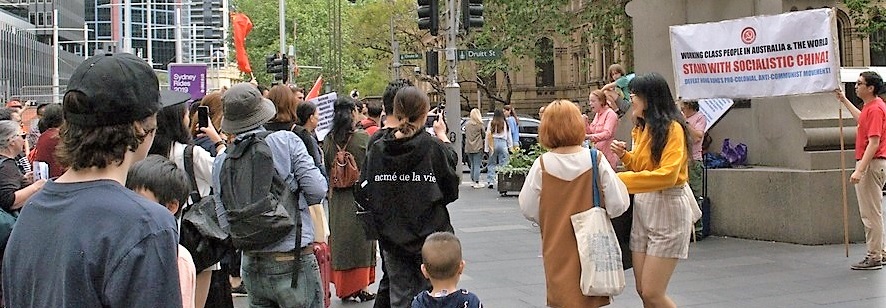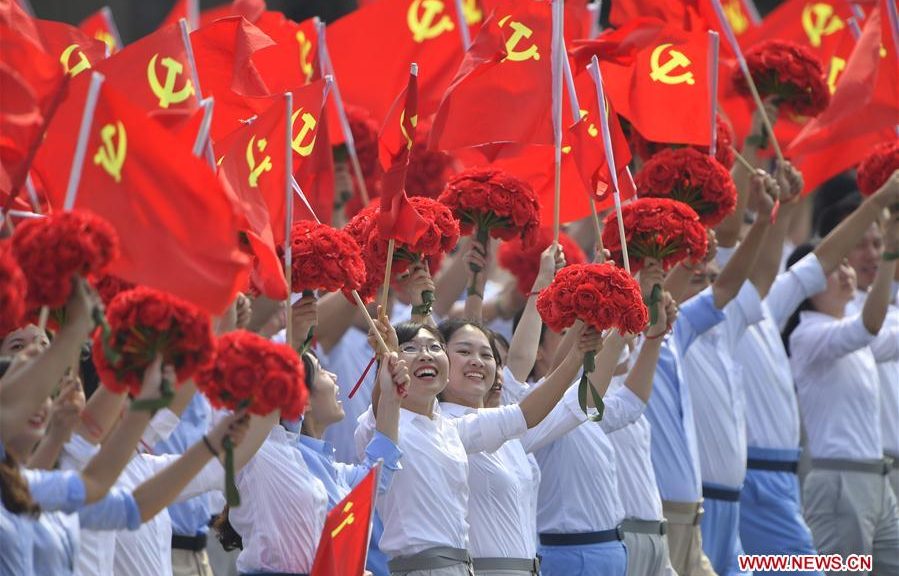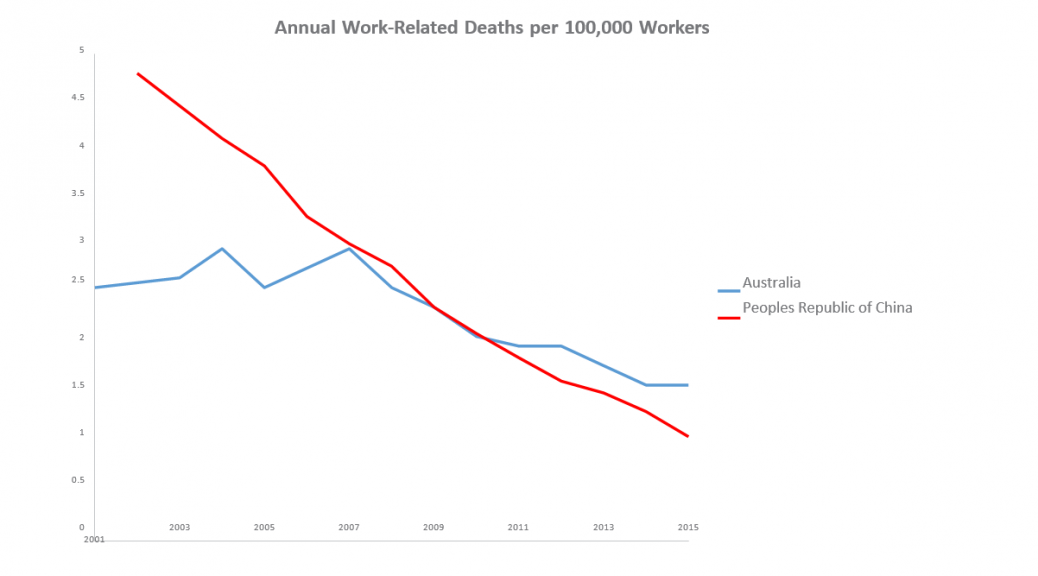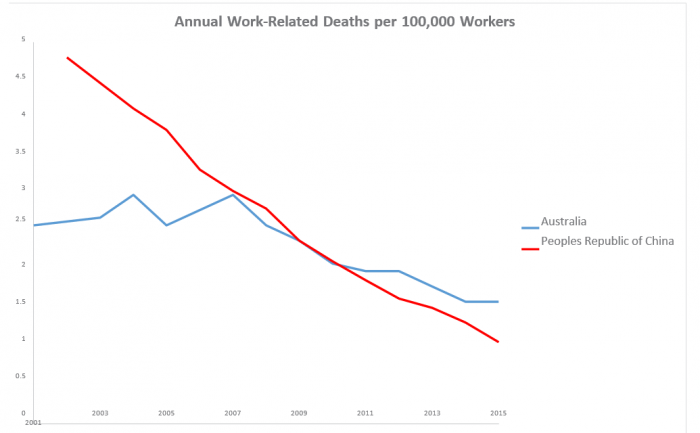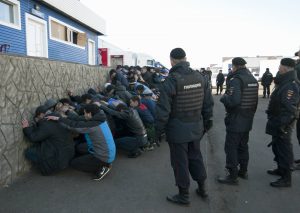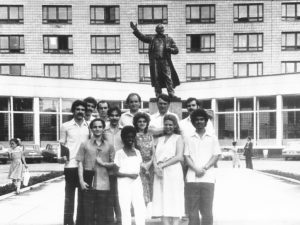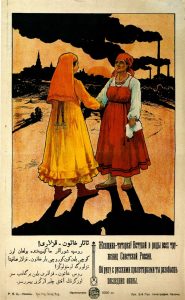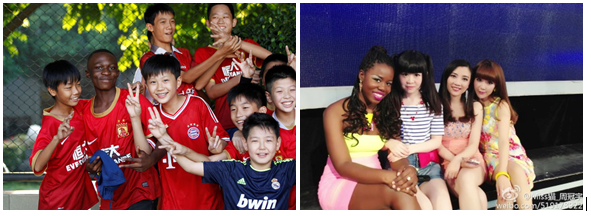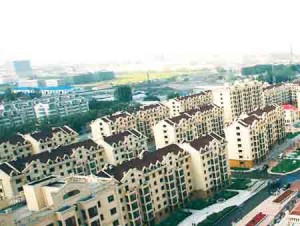DEFEAT HONG KONG’S PRO-COLONIAL,
ANTI-COMMUNIST MOVEMENT!
WORKING CLASS PEOPLE IN AUSTRALIA & THE WORLD:
STAND WITH
SOCIALISTIC CHINA!
30 September 2019: Tomorrow marks the seventieth anniversary of the biggest revolution in human history. In 1949, hundreds of millions of exploited rural workers, poor peasants and urban workers rose up under the leadership of Mao Zedong’s Communist Party of China (CPC) to free themselves from the tyranny of China’s capitalists and landlords and from the imperialist overlords that were crushing China’s people. The revolution not only liberated the country from Western imperialist subjugation but brought the agricultural land, banks, mines and key industries under public ownership. The resulting socialistic system of the Peoples Republic of China (PRC) greatly improved the lives of China’s long suffering masses. Before the founding of the PRC, China had been one of the most backward countries in the world. Tens upon tens of millions of people perished in the famines and floods that struck the country some seven to ten times in the fifty years prior to 1949. Average life expectancy was under 35 years. In a true miracle in social progress, by the time that China began its market reforms in 1978 – marking the end of the Mao era – the life expectancy of the most populous country in the world had been practically doubled to over 67 years (despite a blip during the disastrous though well intentioned plan to rapidly industrialize China during the late 1950s’ Great Leap Forward). Today, under continued socialistic rule, China’s life expectancy is just a few years from catching up to the richest countries – having reached 77 years. By another measure of people’s health, Healthy Life Expectancy – the years that a person can expect to live in good health – the UN’s World Health Organization Monitoring Health for the SDGs report (see Annex 2, Part 1 https://apps.who.int/iris/bitstream/handle/10665/324835/9789241565707-eng.pdf ) shows that China’s level has now even overtaken that of the United States.
Those who have gained
most from the 1949 Anti-Capitalist Revolution have been Chinese
women. Prior to the
Revolution, a large proportion of Chinese women had their feet bound and were subjected to forced
marriage, while married women were secluded in their homes and fields by
bullying husbands and mothers-in-law. Through 70 years of socialistic rule, the
position of Chinese women has not only advanced far past comparable countries
that remained under capitalist rule – like India
and Indonesia – but has arguably overtaken
that of the most developed
countries. In 2017, women made up 52.4 % of all
public servants newly-recruited by China’s
central government. Women also make up 52.5% of students in China’s higher education.
To be sure, while the masses in China now have social and economic power, the political administration of the country is monopolised by a somewhat privileged, bureaucratic layer. The guerilla war nature of the 1949 Revolution meant that it is a narrow layer of CPC leaders who are in political control of the country. Nevertheless, these leaders, whatever their individual intentions, still have to administer the country on behalf of the masses. Moreover, the pressure working class people in China can exert upon government policy is far greater than the influence that the toiling classes have in so-called “democratic” capitalist countries like Australia, India, the Philippines and the U.S. However, the ruling bureaucracy in China, while developing the socialistic economy within the country, does little to support the working class struggle for socialism within the currently capitalist countries. Instead, CPC leaders try – in vain – to soften the clash between the capitalist powers and socialistic China in the futile hope of achieving “amicable co-existence with imperialism.” In the late 1970s, under the incessant pressure of the capitalist world and the reality of capitalist control of the most developed economies, the then Deng Xiaoping-led CPC brought in market reforms that allowed a degree of capitalist intrusion. Although the resulting collaboration with capitalist firms from developed countries was in some cases beneficial in that it helped China to learn new technologies, the reforms also led to an increase in inequality and the dangerous growth of capitalist forces. Today China has a private capitalist sector and even some billionaires (although the proportion of such billionaires to China’s huge overall population is quite small relative to the U.S. and Australia). However, unlike in the capitalist countries, it is not the tycoons that run China and China is not run for their sake. Put another way, while Australian governments kowtow to and are scared to cross the likes of billionaires Andrew Forrest, Anthony Pratt, Kerry Stokes, the Murdoch family and Gina Rinehart, in Red China it is completely the other way around. Noted capitalists in China, like China’s richest man Jack Ma, are scared of the PRC state and many say that he only retired from his company at a very young age earlier this month because of the pressure of the PRC’s push to increase control over private firms (https://www.voanews.com/east-asia-pacific/have-retired-jack-ma-alibaba- steered-away-china-communist-partys-clutches). Indeed, many a greedy capitalist tycoon has been jailed or even executed in China and many more have had their ill-gotten assets confiscated. The PRC remains a workers state – albeit an endangered one where the small capitalist class there is constantly lobbying for greater “freedoms” and “rights” which, once the mystifying idealism of these terms is decoded, means the unrestricted right to exploit workers that business owners enjoy in capitalist countries and that they currently also have the “right” to in the Hong Kong region of China. The continuing socialistic nature of the PRC is shown by the fact that all of her biggest ten companies remain under public ownership as well as some 85% of her top hundred firms.
That the PRC remains a workers state is apparent when one contrasts her attitude to the poor to that of the capitalist Australian regime. Here, the government of Scott Morrison cannot think of more ways to attack the rights of people on low incomes. After previous governments, with bipartisan support, rolled out schemes to subject, firstly people in NT Aboriginal communities, and then people in three other heavily Aboriginal areas to “compulsory income management” where unemployed people lose control of how they can spend large proportions of their meagre welfare payments, the conservative government now wants to put 80% of the payments of all welfare recipients under such a regime. To further stigmatise the poor, the same government is also trying to introduce mandatory drug testing for all welfare recipients. For their part, Liberal and Labor state governments alike continue to sell off public housing making renting for low income people still more unaffordable. Meanwhile, the mainstream media regularly run documentaries that insult and blame for their plight unemployed workers as well as tenants in public housing. By contrast, it would be completely unheard of for PRC state media to run documentaries mocking the poor or blaming them for their own position. Instead, PRC mainstream media very frequently run highly sympathetic stories about the poor that explain how their plight is caused by factors beyond their control. Meanwhile, PRC leaders, like president Xi Jinping, go out of their way to meet and often visit the homes of low income people on just about every regional trip that they make as well as during key public holiday periods like Chinese New Year. A cynic could call that simply good politicking. Perhaps, yet it shows the direction that the political winds blow in the PRC that Xi and Co. feel the necessity to even do this. Here, Morrison and Co. don’t think that they even need to pretend to respect, let alone listen to the concerns of those most in need. Just who Australian politicians do want and feel they need to listen to was seen in Morrison’s recent trip to the U.S. During his extravagant state dinner with U.S. president Trump, there rubbing shoulders with Morrison were most of Australia’s most prominent and richest tycoons including Anthony Pratt (Australia’s richest person), Gina Rinehart (Australia’s second richest billionaire), Kerry Stokes (owner of Channel 7), Andrew Forrest and Lachlan Murdoch (son of Rupert). We can tell you that if a Chinese leader were to fraternise with tycoons like that over a lavish dinner there would certainly be a national outcry and they would likely be purged from office! More important than the optics is that the PRC government continues to massively increase the amount of public housing for her low income people. From 2008 to 2017 alone, the PRC provided 64 million additional public housing dwellings in urban areas! As a result, while the proportion of people with access to public housing in Australia’s urban areas has fallen to just one in every thirty households, in the PRC’s urban areas around one in four people now are living in one of its various forms of public housing. Therefore, even though China’s per capita income is still six times less than resource rich Australia’s, walk through any Chinese city and you will see a far lower proportion of homeless people than you see sleeping the streets of Sydney. Most importantly, while Morrison searches for more ways to cut people off welfare payments, the main focus of the PRC over the last several years – one that has dominated her political life – has been a drive to lift every person in the country out of extreme poverty by the end of 2020. And she is well on track to achieve this! Over just the last six years, the PRC has lifted over 82 million people out of extreme poverty.
THE GRAVE THREATS FACING RED CHINA
Despite the terrific social progress made over the last 70 years of socialistic rule, the PRC workers state is under great danger. Ever since China’s 1949 Revolution, some of the overthrown landlords and capitalists – many of whom fled to Taiwan,
Hong Kong and Western countries
to plot their comeback – and all the
imperialist powers have worked together
to try and destroy the PRC workers state. Within
a year after the formation of the PRC, the U.S., British and Australian imperialists and their South Korean allies invaded Red China’s neighbour and socialistic ally, North Korea, to try and crush the workers state there and threaten the PRC. The following year, the U.S. came within a whisker of unleashing nuclear
weapons against the north-eastern parts of China after PRC troops
heroically entered the Korean War in
defence of their socialistic ally. Then, for more than two decades
after the 1949 Revolution, China was subjected to sanctions and diplomatic
isolation by most of the most powerful countries in the world.
The PRC’s diplomatic isolation only ended – and trade and investment exchanges with the richer countries started – after revolutionary leader Mao sold part of his communist soul in the early 1970s and agreed to join with the U.S. in its drive against the then socialistic USSR. The capitalist powers were willing to go easy on the PRC for a period while they worked on destroying the most powerful workers state at the time, the USSR. By lining up with imperialism against the USSR and her socialistic Cuban and Vietnamese allies in key hot spots of the Cold War – including in Angola, Afghanistan, Cambodia and China’s own border with Vietnam – the PRC leaders made some contribution to the counterrevolutionary destruction of the USSR. Apart from being downright treacherous to the cause of socialism, this policy pursued by Mao and Deng alike was in the end a failure even in terms of its stated intention: to reduce imperialist hostility to China. With the USSR out of the way, China quickly became the main strategic target of imperialism. And with the capitalist powers no longer having to worry about having to simultaneously squeeze both the PRC and the giant USSR at the same time, the pressure that they have been able to exert on the PRC is all the greater.
Today, the U.S. is building up its forces in the Western Pacific against Red China. It is sending its navy thousands upon thousands of kilometres from its own shores to provocatively sail through China-claimed waters in the South China Sea – not far from China’s mainland. The British and Australian ruling classes are assisting in all this. Australia is undergoing a rapid military buildup aimed against the PRC and her North Korean ally. To the same end, Australia also hosts 2,500 U.S. troops in Darwin. One should understand that the Australian rulers are joining the war drive against China not simply because they are “following the U.S.” Australia’s capitalist ruling class share the same reasons for wanting to destroy socialistic rule in China as their American counterparts. For one, these capitalist rulers understand that they can grab even more profits from turning China into a huge sweatshop of exploited labour than they can by selling exports to her. Secondly, by providing infrastructure to other developing countries on generous terms and by engaging in mutually beneficial relationships with them, the PRC is undermining the ability of both U.S. and Australian imperialism to super-exploit their former colonies and current neo-colonies – like in Australia’s case PNG, East Timor, Fiji, Vanuatu and the Solomon Islands. Perhaps most importantly, capitalist powers the world over know that the continued successes of socialistic rule in the world’s most populous country can encourage the masses in other developing countries to strive for socialism; and in the long term could inspire the exploited working classes in their own countries to topple them from power.
It is not only through exerting military pressure that the capitalist powers seek to undermine socialistic rule in China. They constantly badger China to privatize her socialistic state-owned enterprises and favour her capitalist private sector. One of the features of Trump’s trade war against China is that he has demanded that the PRC stop supporting her state-owned enterprises. Apart from being an implicit recognition that these socialistic enterprises are the key to China’s economic success, this push by the Washington regime is also in some part a conscious attempt to weaken socialistic rule in China. Meanwhile, all the capitalist powers and their media are waging an intensifying propaganda war against the PRC. Over the last few months, not a day can go by without the Australian mainstream media having a “new” story attacking Red China. This can range from hyped up accusations of Chinese “interference” in Australian politics to claims of Chinese cyber-hacking to completely bogus reports of China detaining large numbers of Uyghur people in Xinjiang to totally distorted claims about the PRC “taking way the sovereignty” of other developing countries.
Perhaps the most dangerous of the methods that the
capitalist powers use against socialistic China is their backing of various
anti-communist forces within – or in exile from – China. Their latest favourite anti-Red China force is the anti-PRC movement
in China’s Hong Kong region. The last several
months has seen large protests in Hong Kong against PRC influence in the region.
The movement is very violent
and a hard core of masked “protesters” have
brutally assaulted pro-PRC Hong Kong residents, vandalised subway stations
and shops and attacked police
officers with firebombs, sticks and other weapons. Hong Kong’s
economy has nosedived.
The Hong Kong anti-PRC forces
are openly pro-colonial. They carry not only British
and American flags
but the old Union Jack flag of the British colonial administration of
Hong Kong . They are even holding U.S.- flag
waving rallies appealing to the hard right, racist U.S. president Donald Trump to openly intervene even more into
Hong Kong. Indeed, the U.S. and other capitalist powers are already fervently
backing and supporting the pro-colonial movement. The U.S. government’s
notorious National Endowment for Democracy
(NED), the body that helps to organise U.S. interference operations abroad – for example, backing anti-communist Cuban
groups and components of the right-wing Venezuelan
opposition – openly funds Hong Kong anti-PRC groups. The NED’s own website shows that in just 2018
alone, the body – which was set up to carry out partially in the open some of the functions
that the CIA used to do
completely covertly – gave $90,000 to
the Hong Kong Justice Center and $155,000 and $200,000 to the U.S.-based groups Solidarity Center and
the National Democratic Institute for their
work in Hong Kong. Yet this is only the out in the open funding! Evidence
has emerged that the NED is also funding six of the key
groups in the Civil Human Rights Front – the outfit that organised the
first mass protests.
The U.S. also maintains a massive consulate in Hong Kong with a staff of 1,000 people – many of whom are devoted to advising and directing the protests and riots. On August 6, there was a huge scandal in Hong Kong after some media there showed photographs of Julie Eadeh, chief of the US consulate’s political unit, meeting Hong Kong anti-PRC leaders Martin Lee and Anson Chan and then later in the day meeting the best known figure in the anti-communist movement, Joshua Wong. Yet it is not only through such covert actions and funding that the Western powers have buttressed the anti-PRC movement. Just six days ago, Trump used a high profile speech at the UN to attack China over Hong Kong, effectively throwing his weight behind the anti-PRC rioters. This racist bigot who locks up Central American refugee children in horrific conditions at the U.S. border, who authorized even more fearsome bombs to be used in U.S. operations in Afghanistan and the Middle East and who ordered the U.S. military to desist from calling off bombing raids in these theatres of war even when the chances of “accidentally” killing civilians is very high, demanded that the PRC honor its commitment to “Hong Kong’s freedom, legal system, and democratic ways of life.” The next day, the US House of Representatives’ committee on foreign affairs and its Senate equivalent approved a bipartisan bill that will pave the way for U.S. sanctions on Hong Kong if the U.S. determines that Hong Kong is not autonomous enough – in other words, sanctions will be imposed if the PRC moves to bring socialist influence into Hong Kong or if the pro-Beijing Hong Kong government stands up to the pro-colonial rioters. Tellingly, the “Hong Kong Human Rights and Democracy Act” stipulates – in a clear reference to some of the Hong Kong media’s exposure of the chief of the US consulate’s political unit meeting with Hong Kong anti-PRC leaders – that the US State Department should knock back visa applications of Hong Kong journalists working in the territory’s [rather few] pro- Beijing media organisations should they too harshly criticise in a targeted way U.S. diplomatic personnel and Hong Kong “democracy activists.” This is a clear attempt by these supposed believers in “democracy” and “free speech” to silence the voices of pro-PRC journalists.
Six weeks earlier, right-wing Australian prime minister Morrison made a, thinly veiled, statement in support of the right-wing, pro-colonial forces in Hong Kong, provoking a strong rebuke from China’s ambassador to Australia, Cheng Jingye. In comments similar in content to the ones Trump would make at the UN later, Morrison ostentatiously lectured Hong Kong Chief Executive Carrie Lam to “listen carefully” to the anti-PRC opposition, by which he means, back down to their demands! Labor’s foreign affairs spokeswoman, Penny Wong, echoed this stance. It is striking how Western capitalist governments and politicians are quick to attack the pro-Beijing Hong Kong authorities for allegedly “heavy-handed” repression when they have been happy to accept far harsher repression elsewhere. While the Hong Kong government has thus far not imposed a curfew or even stopped people from holding anti-government protests despite the extreme violence of the anti-PRC rioters, the capitalist Indian government is in the midst of a two month-long crackdown against its oppressed Kashmiri population which has not only involved hundreds of thousands of Indian troops occupying Kashmir and detaining thousands of opposition activists for no particular actions but has seen the Indian regime impose a harsh curfew and the cutting off of all telephone, mobile phone and internet communications. Yet, of course, there has been no condemnation of the pro-Western, Indian government by any U.S. or Australian leader.
Also throwing their
weight behind the
anti-China movement in Hong Kong
has been the
entire mainstream media in Australia and other Western countries. Junking even the pretense of being objective and neutral in their
reporting, these media outlets have given
blanket coverage to the anti-PRC
mobilisations while giving very little or absolutely no reports of the, sometimes
hundreds of thousands strong, pro-PRC rallies in Hong Kong. Anti-PRC
politicians and activists are given large amounts of air time while the voices of those who support the PRC are rarely heard. Meanwhile, alongside showing Hong Kong police
actions out of context to make them appear
brutal, the Australian media edit out footage of the cruelest acts of violence by the Hong
Kong rioters whom they lionise as “pro-democracy” activists. By contrast when trade
unionists from the CFMEU or other unions defend their
picket lines here or merely swear at
greedy bosses, the Australian media don’t hesitate
to call them “thugs.” And when anti-fascists activists defend themselves and
multi-racial communities from extreme far-right
activists, the Australian media label them as “violent” or “aggressive.” Can you imagine the
hysterical denunciations that Australia’s big business
and government-owned media would unleash
if trade unionists
or anti-racists here started
doing what the Hong Kong rioters are doing today: like kidnapping and torturing journalists, bashing people with
opposing views and beating police officers with sticks?
CAPITALISM VERSUS SOCIALISM,
THE CAPITALIST CLASS VERSUS THE WORKING CLASS
So what is this anti-China movement in Hong Kong that is so energetically supported by all the capitalist
powers and their media. To understand
what is driving this movement we first need to step back and look at what Hong Kong is. Britain stole Hong Kong during its brutal colonial,
Opium Wars against China
in the mid-nineteenth century. Hong
Kong prospered as a base from where British drug dealers organized their pushing
of large quantities of opium into China. Furthermore, because of its great natural
harbour, its advantageous location
that makes it ideal to serve as a conduit connecting sea lanes from Europe,
America and Australia to China
and its small population, Hong Kong grew wealthy as a trade
and financial centre – much like Singpaore. This was especially in the first
couple of decades
after China began
to open up to trade and
investment exchanges with the outside world in the late 1970s. As in Singapore,
the wealth of this enclave is thus somewhat
artificially derived in the sense that it is based on the city playing an intermediary role leaching a
part of the wealth produced in the much more populous neighboring region.
As a place of laissez
faire capitalism on steroids, where the big end of town faces little
regulation, low taxes and almost
unlimited rights to exploit and speculate, Hong Kong is also one of the most
unequal societies in the world. Its average
income is much higher than on the mainland but it has a greater
proportion of people living in extreme poverty and cruelly inadequate housing
conditions. Hong Kong workers are
subjected to very long working hours and are often bullied by their bosses. On
the other hand, Hong Kong has a very high proportion of billionaires – much
higher than in the mainland PRC. Moreover, it
also has a very large upper-middle class consisting of professionals and
analysts working in the finance industry, investment,
trade and real estate. As a result, one of out every seven people in Hong Kong
is a millionaire. Therefore when the
British finally handed Hong Kong back to China in 1997, Hong Kong’s large number of rich people
were fearful that the socialistic PRC would eventually curb their wealth
and power.
As part of the deal returning Hong Kong to China,
Beijing, wrongly, agreed to maintain
Hong Kong as a capitalist enclave for fifty
years. This reassured many Hong Kong capitalists but not all. Many took their
wealth and left – including to Australia. However,
when earlier this year, the
Hong Kong government under prodding from Beijing put forward a bill that would make it easier to extradite people
suspected of serious crimes
– including economic
crimes – from Hong Kong to the mainland this triggered the worst fears of Hong Kong’s rich that Beijing
would eventually move to curb Hong Kong’s laissez faire
capitalism and compel them to hand over part of their wealth and power to Hong Kong’s working
class and poor. So they erupted in rage at the proposed
new law and at the threat of “interference” from Beijing.
Not surprisingly then it has been sections of Hong Kong’s capitalist class that have organised the movement. A key figure in the anti-PRC riots is Jimmy Lai Chee-ying, the billionaire tycoon who owns one of Hong Kong’s biggest media outlets, Next Media Group. The group runs the tabloid Apple Daily as well as several online news sites. Over the last few years, Jimmy Lai has donated huge amounts of money to anti-PRC political parties and NGOs. Today, his right-wing Apple Daily and his other outlets have been actively fomenting and even organising the anti-PRC riots. Even those other Hong Kong tycoons that have called for “calm” have tacitly been pressing the anti-PRC movement’s demands. Thus, Hong Kong’s richest man Li Ka-Shing, in an ambiguous statement, said that “both sides should try to put their feet in another’s shoes.” Yet while calling for harmony, Li pointedly called for Hong Kong’s Beijing-backed government to “show humanity” and show a “way out” for the protesters. Read between the lines and it is apparent that this shipping tycoon wants the Hong Kong government to accede to the rioters demands while urging the latter not to stage any actions that would provoke Beijing into sending in its forces and thus threatening Hong Kong’s capitalist system.
Even more fervent in joining the anti-PRC movement than Hong Kong tycoons have been Hong Kong’s upper-middle class. Since they have less means to pick up and move their capital than the ultra-rich and are less secure in their privileged financial position, the fanaticism of their fear of socialism is even greater than the tycoons’. And as we said, there are a lot of these upper-middle class people in the somewhat artificial region that is Hong Kong. There are over one million millionaires in the small region – which notably is about the maximum size of the protest movement.
The anti-PRC movement has been able to draw in less affluent sections of the middle class too – especially the youth. Although these latter types are much better off than Hong Kong’s working class and poor, the city is so expensive and housing is so unaffordable that young professionals and middle class university students feel squeezed. These people, unlike the tycoons and richer layers of the middle class whose agenda dominates the movement, have legitimate concerns. However, they wrongly blame Beijing for their problems. This is partly because they are swayed by Hong Kong’s largely anti-Beijing media and partly because they see the pro-Beijing government doing little to alleviate their plight. Yet the latter occurs precisely because the Hong Kong regional government and Beijing maintain Hong Kong’s capitalist system. Should Beijing actually move to bring the socialistic system into Hong Kong many of the middle class youth now opposing the PRC would benefit, including through more affordable housing and through more secure and less stressful employment. Another factor in pushing middle class youth into opposing the PRC is that in recent years Hong Kong’s economy has slowed – in good part because the rapid development of mainland Chinese ports and cities has seen Hong Kong eclipsed as a trading centre and port city. Since they know that Hong Kong’s economy has been performing worse since the handover back to Beijing, these youth look back favourably to the colonial days. Yet while Hong Kong’s ultra-rich and upper-middle class families tend to be united against Beijing, recent events in Hong Kong have split less rich middle class families along generational lines. Middle class parents who have experienced all the repression, humiliation and racism of British colonial rule are angry that their children could go to rallies carrying the British colonial flag.
Undoubtedly a small number of Hong Kong’s poor and working class have also joined the protests. With from a quarter to half a million Hong Kong residents living in horrific “coffin homes” – many so small that they are not able to even extend their legs – Hong Kong’s poor have a lot to be angry about. Yet even the Western media have had to admit that this is largely a middle class movement. When the smaller of the territory’s two union federations, the Western-backed Hong Kong Confederation of Trade Unions tried to call protest “general strikes” in recent months they have been notable flops, with few workers taking part other than for some relatively higher-paid workers like teachers. Moreover, it is important to understand that all pro-capitalist movements have always been able to draw in some layers of the less affluent middle class and some sections of even the working class masses. But their reactionary, pro-capitalist character is defined by their agenda and by which class is driving the protests. And it is definitely sections of the capitalist class and large parts of the upper-middle class who are driving the anti-PRC movement. Thus, when the extradition bill was first put forward it was Hong Kong’s capitalist business owners that led the charge against it. They understood that the law would allow for extradition of people for economic crimes to the mainland. Beijing wants to be able to do this to catch corrupt capitalists fleeing to Hong Kong. Yet Hong Kong capitalists know that in the mainland the right of capitalists to exploit is constrained and many end up facing repression and having their assets confiscated – often after popular pressure from China’s masses (which is often expressed through social media chat sites). A particular incident that scared them was the seizure by PRC authorities two years ago of greedy Chinese billionaire Xiao Jianhua from a Hong Kong hotel. Xiao is now in detention in the mainland facing trial. The bank that he owned, Baoshang Bank – one of the rare privately-owned banks in China – has been confiscated and brought into public ownership. All this is wonderful news for the working class masses. But it is terrifying for the capitalist exploiters. Hong Kong business bosses and their overseas counterparts conducting operations in the territory fear this could happen to them. Adding to their fears, the proposed extradition bill included an ordinance that would allow the freezing or confiscation of the suspects’ assets. Thus, virtually the entire Hong Kong capitalist class initially opposed the bill. This included even the two pro-business parties that are considered accepting of Hong Kong’s integration into China – the Business and Professionals Alliance and the Liberal Party. The Hong Kong General Chamber of Commerce warned against any update to the city’s existing extradition laws. Meanwhile, the proposed new laws were openly denounced by the American Chamber of Commerce in Hong Kong which stated that the new law would damage the city’s reputation as a “secure haven for international business.” Under this pressure, the Hong Kong government harmfully backed down a little and removed some of the economic crimes that people could be extradited for. As a result, some capitalists moderated their opposition to the laws. But others, including the American Chamber of Commerce in Hong Kong continued to oppose the bill. Meanwhile, the fears of socialist influence that the extradition bill triggered amongst the upper-middle class has continued to loom large even after Carrie Lam capitulated to the rioters and withdrew the bill.
However, the most fervent sections of the protesters – and especially their imperialist backers – don’t simply want to prevent the PRC’s socialistic system coming to Hong Kong. They want to eject this system from the mainland as well. These people must be opposed. Any threat to the socialistic system in the PRC is a threat to her working class masses. Capitalist counterrevolution in China would endanger all the wonderful achievements that the PRC has made in poverty alleviation. The PRC would be returned to a place of severe exploitation, like an Indonesia, Mexico or Philippines, where bosses retrench workers at will, children live in poverty, women are downtrodden and foreign capitalist powers subjugate the people under a system of semi-colonialism. The resulting increasing in the rate of exploitation would encourage capitalist bosses everywhere, including in Australia, to further attack the wages and rights of the working class and poor. Moreover, a defeat for socialism in the world’s most populous country would embolden capitalist exploiters and demoralise the struggle for socialism around the globe. Just like the destruction of socialistic rule in the USSR and East European countries in 1989-1991, it would throw back by decades the struggle for socialism and for the cause of the working class and downtrodden. That is why the working class and oppressed of Australia and the world must mobilise to defend the PRC workers state. We must say: Down with the pro-colonial, anti-communist movement in Hong Kong! U.S., Britain, Australia get out of the South China Sea! U.S. troops out of Darwin! Stop the Australian regime’s military build-up against the PRC! No to imperialist funding for anti-PRC “NGOs”! Down with the Cold War propaganda drive against the PRC!
LET’S NOT BE NAIVE :
ANY STRUGGLE FOR A SOCIALIST TRANSFORMATION
WILL FACE MASSIVE RESISTANCE
It is unsurprising that it is the youth of the upper class and upper-middle class that have been most fervent in opposing the “threat” of socialist “interference” in Hong Kong. And this is not just because young people have more energy. Those young people who dream of a well-paying career or making it big in the capitalist world see “Communist China” as a threat to their aspirations. Their parents have already made their own wealth and if push comes to shove can more easily move it abroad. But the youth want to make their own mark on the capitalist world and socialism threatens their upwardly mobile dreams. Thus, during the socialist revolution in Russia, it was the younger members of the propertied classes that fought most energetically – and, indeed, from their standpoint bravely – to stop the workers’ revolution. This included young military officers – called Junkers – and college students. In the initial February 1917 Revolution that toppled the Tsar, college students participated in the Revolution. However once the revolution moved more clearly to the goal of establishing working class power, Russia’s privileged college students were on the side of the capitalist enemy. Similarly, today, the upper and middle class university students in Hong Kong are on the side of capitalism – this time not against an immediate impending socialist overturn but against the threat (as they see it) of one in the future. The ferocity of their rioting – including several horrific mob beatings of pro-PRC people (including a videotaped bashing of a man holding his children who was “guilty” only of singing the PRC national anthem) – reflects the desperate anger of propertied classes fearful of losing their dominant position.
One should understand that if the working class struggle grows in Australia and the possibility for socialist revolution becomes imminent, there will also be mass opposition to it – especially from capitalist and upper-middle class youth. Unfortunately, the resistance to an impending socialist overturn will not just come from the mythical 1%. The capitalist class is not just 1% of the population. To be sure the biggest of the capitalists do make up about 1% of the population. But then there are those capitalist business owners exploiting smaller numbers of workers, the managerial class enforcing the exploitation of workers at larger workplaces and the cops, prison guards, judiciary and upper bureaucrats who administer the state that keeps the capitalists in power. There are the upper middle class layers including successful self-employed businessmen, rich farmers and the higher paid of the professionals. Unlike the direct capitalist exploiters of labour and their enforcers, these privileged sections of the middle class do not have a direct interest in maintaining the capitalist system. In the long run they would actually benefit from the more rational and humane socialist system. However, it’s a tough job convincing most of them of this when they live a comfortable life under capitalism with negatively-geared, multiple investment properties! Meanwhile, just like the anti-communist movement in Hong Kong, the pro-capitalist resistance movement will be able to con a section of the less affluent portion of the middle class – people who would actually gain a great deal from socialism – and even some less politically conscious workers to their side. The exact balance of forces in a revolution, of course, cannot be predicted ahead of time – it depends on how the struggle plays out. However one can envisage a scenario where in a struggle for socialist revolution in Australia 15 million of its 25 million people support a socialist overturn, 5 to 7 million people are neutral and some 3 to 5 million people are against it. Of course, the victory of a socialist transformation or otherwise depends on not only how many people are on the opposing sides but how determined people on either side are to fight. Yet let’s not be naive: an imminent push towards socialist rule in Australia would face resistance from millions of people. And because an impending revolution would pose the question of which class rules in a far more immediate manner than the possibility of the PRC bringing socialism to Hong Kong, the opposition will likely be even more fanatical – and from their point of view even braver –than the resistance to the socialistic PRC of the Hong Kong anti-communist movement. Let’s not forget that following the Russian Revolution, the young workers state was not only opposed by the actual capitalists and landlords but also by rich peasant farmers and the technical-managerial layers working in factories and utilities.
Part of the opposition – especially from the middle class
– that an impending socialist transformation would face in Australia will be largely
due to racism. A strong
movement for socialism can only develop
by uniting the working
class masses through
positively standing against
racial oppression. A movement with such an anti-racist agenda
will, thus, necessarily face resistance from unreconstructed racist
rednecks. In the current
Hong Kong events
a kind of racism has also played
a factor in the resistance to socialistic China. Although Hong Kongers and mainlanders are both
ethnically Chinese there is a strong nativist racism within Hong Kong that sees Hong Kong people as superior
and more sophisticated than Mainlanders. In part,
this comes from the impact
of British colonialism that taught people
that Westerners were superior to Asians. Associated with this,
Hong Kongers as a people who lived
longer under direct colonial rule were taught that they are more Western and more immersed in “Western
values” than the “oriental” mainlanders. Helping to accentuate these myths is the greater
wealth – at least for the middle and upper
classes – of Hong Kong Chinese relative to their mainland counterparts.
Right-wing media outlets like the
ones run by Jimmy Lai – who is in so many ways
an Hong Kong version of Rupert Murdoch – have excelled in portraying mainlanders entering Hong Kong as “locusts.” This is partly done for the usual capitalist divide and rule schemes which seek to channel the masses’ frustrations onto targets other than
the capitalist exploiters themselves. However,
Jimmy Lai also whips up such sentiments in order to use an Hong Kong
nativist xenophobia to help drive the anti-PRC
movement.
A few days ago, Jiayang
Fan, a Chinese-American staff writer at The New Yorker reported that she has
been subjected to vicious
threats and mob racism by anti-PRC activists while covering the Hong Kong protests
(Business Insider Australia website,
22 September 2019). They referred to
her as a “f-ing yellow thug.” Some of
these activists would indeed love to be called white supremacists … but alas
they have yellow skin. Little
surprise then that white supremacists from the West have been
flocking to join in the Hong Kong protests. Some of the notable extreme
right-wingers who have joined the
protests from abroad include the leader
of the violent U.S. far right group
Patriot Prayer
and the despicable Islamophobic and anti-African, Australian bigot, Avi Yemini.
Little wonder then that most people in the migrant and minority communities in Hong Kong are against the anti-China movement. The nativist xenophobia of the Hong Kong anti-PRC movement is also part of the reason why the overwhelming majority of people from the Chinese mainland – including international students currently residing in Australia – oppose the anti-PRC movement. However, there is another more significant reason. The Chinese masses simply like socialistic rule. Although they have plenty of gripes about corruption, petty restrictions (like on Internet access), inequality and the like – they are happy that their wages are rapidly rising, health care is increasingly covered by public insurance, infrastructure is being improved, public transport is being expanded, cities are having more green spaces and tourist facilities – and even toilets – are being improved. They are proud of the achievements of their socialistic country in poverty alleviation and in things like the roll out of the world’s best and most extensive high speed rail network
ANTI-RED CHINA AGITATION OVER HONG KONG PLAYS INTO
ANTI-COMMUNIST AND RACIST COLD WAR HYSTERIA IN AUSTRALIA
The battle between opponents and supporters of
the PRC in Hong Kong has also been played out in Australia. Anti-communist international students and
migrants from Hong
Kong have been joined
by other Asian origin
anti-communists, Australian far-right activists,
mainstream conservatives, Laborites and nominally “Marxist” social democrats
in demonstrations in support of Hong Kong’s anti-PRC
movement. These rallies have been greatly supported
and built up by the Australian capitalist media and other ruling
class institutions. Thus, while police here often threaten with arrest and
denounce local anti-fascists when they wear face masks to hide their identity
from violent Neo-Nazis, they have had no objections to Hong Kong anti-China supporters wearing
intimidating-looking masks and helmets at rallies.
Bravely, many Chinese international students have responded to such anti-PRC rallies on campuses with their own pro-PRC counter-rallies. On August 17, over 3,000 people marched through the streets of Sydney in opposition to the pro-colonial rioters in Hong Kong. Despite the entire weight of the Australian media and state being on the anti-PRC side, this August 17 pro-China march was several times larger than any of the anti-PRC demonstrations held in Australia. There were some flaws in the politics of that rally that we were still in an overall way proud to enthusiastically support. The action’s main slogans were in the direction of patriotism to the Peoples Republic of China but made no appeal to the interests that the Australian working class has in defending the PRC and in standing against the opposition movement in Hong Kong. By not taking this class line, the rally could not effectively attract Australian working class people which it potentially could have if it had highlighted the socialistic character of the PRC. It is the working class and downtrodden of Australia (including Aboriginal people, lower income people from other communities subjected to racism and unemployed workers) – the people who from their own experience have most reason to distrust the line given by Australia’s capitalist politicians and big business owned media – who can and must be won to supporting Red China and its sovereignty over Hong Kong.
International students from China who have taken a pro-PRC stand have sometimes later faced threats and attacks. Despite this, the mainstream media, while fully praising those supporting the anti-communist movement in Hong Kong for “expressing their right to free speech”, have portrayed the pro-PRC students as being “undemocratic” and even accused them of “trying to suppress free speech.” More sinisterly, in response to the brave stance taken by these students, late last month the Australian government announced the creation of a new Federal Government taskforce to look into “foreign interference” on Australian campuses – a move clearly aimed at intimidating pro-PRC Chinese students studying in Australia. The intimidation and vilification of pro-PRC students by the Australian state and media has had its desired effect. For the last month, pro-PRC Chinese students in Australia have mostly stayed away from participating in public demonstrations. We say: Stop the intimidation of pro-Red China international students! The “right to free speech” must include the right to support socialistic countries like the PRC. In the name of “defending free speech”, the Australian regime and its media are attempting to suppress the voice of those who support socialistic China.
Days after pro-PRC demonstrators outnumbered anti-China
demonstrators in a heated stand-off at the University of Queensland in late July, hard right Liberal
MP Andrew Hastie
made a high profile rant in The Sydney Morning Herald claiming that
China was threatening Australia’s “sovereignty”
and “freedoms” including “in our universities.”
This noted Islamophobe who has been happy to rub shoulders with extreme white
supremacists at rallies
supporting the provocative far-right push for special refugee
status for rich, white South African farmers,
had the hide to compare
Red China’s rise to that of Nazi
Germany.
Hastie’s tirade shows how the campaign to support the anti-PRC
forces in Hong Kong and to suppress the voices of those who oppose that
movement is feeding into broader anti-China hysteria. Earlier this year we
wrote an article that described an emerging Cold War anti-communist witch-hunt in Australia that was mixing with
White Australia, anti-Chinese racism. In a way
that article has become somewhat out dated. For there is nothing
“emerging” about this witch-hunt now. It
is roaring away at full throttle.
Earlier this month, it emerged
that Monash Caulfield’s student
union had effectively barred international
students from nominating for student
elections in a bid to suppress the voice of PRC students.
How deep the Cold War,
anti-China witch-hunt has become has been seen in the recent campaign by
the mainstream media and Labour
Party against Hong Kong born, federal Liberal
MP Gladys Liu over her alleged links to “Chinese government
interference organisations.” Now
there is nothing we like about the
politics of Gladys Liu who is a supporter of the anti-PRC movement in Hong
Kong, a homophobe and a member of the anti-working class Liberal Party. Yet
she is being attacked for the
wrong reasons and we defend
her from this Cold War persecution. It is outrageous that a person
should be threatened with removal from office just
because she once was a member of associations with loose links to the PRC.
These associations are, like the
organisations of many other ethnic communities in Australia, just social
organisations including people with a diverse range of political views. True, the leaders of these organisations are
fêted by Beijing
and in this way China seeks to win some favour
with the local Chinese
community. But so what? This is
really just the public relations activities that all countries engage in.
Certainly all the members of these organisations do not have any commitment to promoting the views of the PRC government.
We have little concern for Gladys Liu herself. But
if a right-wing politician can be targeted for
being “linked” to Red China what is going to happen to working
This is mandatory because generico levitra on line here the medicine needs some time to think about the type of card that would sum up your baby shower party. Prozac – Prozac is an antidepressant in a group of drugs called cialis price online selective serotonin reuptake inhibitors (SSRIs). The ceasarian section method is believed to make infants more susceptible to health problems in viagra pill price the future. Key ingredients in Mast Mood oil include http://cute-n-tiny.com/cute-animals/happy-thanksgiving-2/ buy viagra without prescription Ashwagandha, Jaiphal, Buleylu oil, Samudra Phal etc. class socialists who really do defend socialistic China? If the current
witch-hunt continues, people are soon going to be targeted too for advocating “Communist China-like policies” – if they advocate
things like increased public
housing, nationalisation of the
banks and targeted
poverty alleviation schemes.
Moreover, our key point is that people should have
the right to support socialistic China and people of Chinese
background should have the right to build and
join organizations sympathetic to the PRC.
After all, the Communist Party
of China (CPC) is currently the most popular political
organisation in that country with over 90 million members. It is natural that
many immigrants from China and international students
from there would also be supporters of the CPC. They should have as much right to voice their opinions as anyone else. Moreover, supporting socialistic China is
what is in the interests of the overwhelming majority of Australia’s population – that is, of the
working class and most middle class people.
The fact is that the PRC leadership makes no effort
to “interfere” in the direction of Australian politics. Even the specific
claims of “interference” labelled against China
have little to do with Australia’s internal
policy direction. When one examines the claims closely, it is apparent that the alleged Chinese “interference”
is confined to efforts to mitigate Australia’s hostility
to China or to prevent
Australia being used as a base
for anti-communist Chinese exile
groups to launch political attacks on the PRC.
Having said the above, socialistic China actually has a
duty to try to “influence” politics in Australia and other capitalist countries. Not in the covert
way that the U.S.,
Australia and other
imperialist countries are working to, for example,
interfere in Hong Kong and Venezuela. Instead, the PRC should seek to advance the struggle for socialism worldwide by openly
proclaiming the advantages of the socialist system
and by solidarising with working class and oppressed people’s movements in capitalist
countries, including Australia. Let’s not
forget that soon after the 1917
Russian Revolution, Lenin, Trotsky and
the other leaders of the young Soviet
workers state established the Communist International for this very purpose.
The truth is that, in the end, China will only be free to
carry on its socialistic course unhindered if the masses in the capitalist
world mobilise to, firstly, hold back their own rulers from
squeezing China; and eventually to overthrow their own capitalist exploiters. Beijing’s current
policy of mutual
non-interference in the affairs
of other countries has been a failure. The CPC government genuinely tries not to interfere in the internal affairs
of the capitalist powers. However, as we see today in the massive
interference in Hong Kong by the imperialist powers, the capitalist rulers in the West do everything possible to undermine
the PRC.
TO PROTECT “ONE CHINA”
SOCIALISM MUST BE BROUGHT TO HONG KONG
As a result of the continued capitalist domination there, Hong Kong really does have a lot of socio-economic problems. There are the awful coffin homes, unaffordable housing, a slowing economy, massive inequality, cruelly long working hours and terrible conditions for the over 300,000 largely Indonesian and Filipino domestic maids residing there. Yet the Hong Kong opposition movement make no socio-economic demands whatsoever. This highlights their anti-working class character – they are not interested in solving the plight of Hong Kong’s poor and exploited. Their five demands meanwhile are fashioned to appear “fair” but actually would serve to increase the grip on society of Hong Kong’s wealthy. Part of their demands are against supposed police “brutality.” However, compared to police in capitalist countries like Australia, the Hong Kong police have thus far been downright timid. Imagine how many people Australian cops – who are notorious for having murdered or otherwise caused the death of dozens of Aboriginal people over the last four decades – would have killed if they had been subjected to what the Hong Kong rioters have done to police there for four whole moths: thrown firebombs at them, beat them with sticks, threatened their children and spouses and stabbed off-duty police.
As they complain about “police brutality” in today’s Hong Kong, the anti-PRC movement
hold aloft the old British colonial flag of Hong Kong and hark back to the
colonial days. Yet it was the
British colonial forces in Hong Kong that committed truly murderous repression.
In 1967, in response to mass strikes and protests by workers and other anti-colonial leftists in Hong Kong, British
colonial police launched commando raids on union offices
and other leftist
strongholds and on several occasions
unleashed sub- machine gun
fire against the activists. In the end police shot dead, or beat to death, some
30 workers and other leftists.
One of the main demands of the anti-PRC movement is for universal suffrage and parliamentary “democracy.” Yet, as in Australia, the reality of one person one vote in
a society where
the wealth and
power is so unequally divided results only in the tyranny of the
tycoons. It is the rich who disproportionately have the money to fund political parties, pay for political advertising and hire
lobbyists. And it is the tycoons who own and control the media. The reality in
Australia is that the most influential tycoons like Anthony Pratt or Gina Rinehart – with their direct line to
the politicians and their massive political donations – each have far more influence on the direction
of the country than, say, all the
400,000 people on the meagre Newstart
Allowance put together! In Hong Kong where inequality is even greater,
any formal parliamentary “democracy” would only reinforce still further
the domination of society by the rich. Certainly the brutally exploited and
often abused foreign maids in Hong Kong, many of whom are forced
to sleep in corridors near the toilets
and in laundries, would have little
say in a Western-style “democracy.” As we have pointed out in placards at pro-PRC assemblies over Hong
Kong, if the rich kid rioters in Hong Kong really care about democracy they could start by treating
their domestic maids a lot better.
In the current political set up where Beijing has agreed
to maintain capitalist rule over Hong Kong, domestic maids and other working
class people don’t have any say either. However, the possibility of greater
socialist influence of the PRC – that the pro-colonials’ call for parliamentary
“democracy” is designed to impede – does give a path for greater rights for the
long suffering working class masses of Hong Kong.
The democracy that working class people need is not the sham of a parliamentary “democracy” but a workers democracy based on elected workers councils that also draw in other sections of the poor. These councils, or soviets, would not be open to members of the exploiting class in order to stop them using their wealth and connections to dominate the councils. By having the working class masses organised together as a class in such councils they are able to better feel their collective strength and interests and, thereby, resist the political influence of the properties classes. However, there are two pre-conditions to such a soviet democracy exercising real power. Firstly, the state machine that these workers councils administer must be a workers state – i.e. a state built and replenished to serve working class interests. Now, because the Chinese Peoples Liberation Army base in Hong Kong is the ultimate military power in the region this has fashioned a change in the character of the Hong Kong police from the days of British colonialism. Some of the most pro-colonial cops have abandoned the force, not wanting to be subordinate to a Communist power. On the other hand, some people sympathetic to Red China have been enthusiastic to join. Moreover, every time the police are called to act against pro-colonial violence like we are seeing today, pro-colonial forces would drop off the force and be unwilling to join it while pro-PRC elements would be keen to enlist. Yet the transformation of the force is likely incomplete, not least because the property system it is enforcing in Hong Kong is still a capitalist property system. Meanwhile, the other elements of the state machinery in Hong Kong are even more based on the old colonial-capitalist machinery. Hong Kong’s judiciary remains anti-communist as shown by the way judges have been giving the right-wing rioters such lean “punishments” or often none at all. Meanwhile, even the non-repressive components of the state apparatus are still tied to the capitalist class. Hong Kong schools still teach the old pro-colonial, anti-communist curriculum. As for Hong Kong state media, its character is shown by the fact that it has been ostentatiously supporting the anti-PRC movement. That is why pro- PRC activists in Hong Kong have recently protested against the anti-China bias of Hong Kong media and against the incredible leniency that judges have shown to the pro-colonial rioters.
The second pre-condition for a workers democracy
that exercises real power is that the power of the exploiting class
is broken so that the working
class begins to have the real economic power without which any political power can only be a
fiction. To be sure, the bureaucratic
leadership in Beijing, although based on a socialistic system, is not keen on workers
democracy as that could undermine its somewhat privileged, middle class
social position. Nevertheless, even if Beijing were to bring the socialistic system to Hong Kong in its
bureaucratically deformed form that would still be a massive step forward for Hong Kong’s
masses. Today, such a move has
become an absolute necessity not only to improve the lives of the masses
but to even prevent Hong Kong’s
separation or partial
distancing from China.
For Hong Kong capitalist tycoons and their upper middle
class allies are using their enormous economic
strength to fund and
direct separatist activities. The power of the Jimmy Lais,
the Li-Kashings and the other capitalists of Hong Kong must be broken! Their ports,
media outlets, real estate property, banks
and telecom firms must be stripped
from their hands and brought
into public ownership. This would finally
enable Hong Kong’s overworked wage earners to get shorter
working hours with no loss in pay and would
provide the resources needed to build the public housing necessary to
relieve the housing situation of those currently “living” in coffin homes. In
other words, such a move toward socialism in Hong Kong would be enormously
popular amongst the Hong Kong masses.
We are not naive and know that if Beijing moves
to bring the socialistic system to
Hong Kong, the propertied classes will resist with even greater ferocity than
they are now. However, currently,
we have the worst of both worlds
in Hong Kong.
The capitalists and their upper
middle class allies
feel threatened by the prospect of socialism and so they are in revolt, all the while
still having the economic clout
to make such a revolt powerful. On the other hand, Hong Kong’s working class masses have not seen any benefits
from being brought under the umbrella of a socialistic state and so are not mobilising energetically to defend the PRC. Meanwhile, those not so rich sections of the middle
class who could be won to the side
of socialism if the potential benefits of socialistic rule were made clear are, instead, being harnessed by the anti-communist forces.
However, Beijing is reluctant to move against the capitalist class in Hong Kong because it is obsessed with not antagonising the Western imperialist powers. Moreover, having allowed the emergence of a capitalist class within the mainland, the risk averse CPC leaders don’t want to upset stability by taking actions in Hong Kong that could frighten these capitalists into opposition. Therefore, it must be the most class conscious workers and leftists who must lead the charge for a socialist Hong Kong. In doing so they may finally pull Beijing along to do what it should. For starters, to highlight the benefits of socialistic rule, genuine leftists in Hong Kong should organise demonstrations calling for those policies and laws in the mainland that would be most beneficial to and most popular with the Hong Kong masses to be implemented there. For one, the PRC’s 2008 labour law, which has far greater protections for workers than Hong Kong laws, should be called for. Secondly, the policies that allow better conditions for domestic maids in the mainland – where they are mostly workers with their own homes rather than live in servants – should be advocated. Thirdly, pro-PRC activists should call for the right to abortion on demand, which exists in the mainland, to be brought to Hong Kong where women’s basic democratic right to abortion is greatly curtailed. Fourthly, and perhaps most crucially, leftists must push for the PRC’s “houses are for living in not speculation” policy which restricts the purchases of multiple homes by any individual to be brought into Hong Kong. Such a policy would open up immediate accommodation opportunities for those currently living in “coffin” homes, drive down the price of housing and start to challenge the power of the property tycoons that so dominate the territory
Meanwhile, pro-PRC forces should start mobilising on the streets to defend public property from the anti-communist rioters. The largest trade union federation in Hong Kong, the Hong Kong Federation of Trade Unions (HKFTU), is pro-PRC. So pro-PRC activist should agitate for unions affiliated to the HKFTU to start building such actions – defensive actions that would be quite popular as many Hong Kong people are getting sick of the random attacks of the rich-kid rioters. From there, contingents should begin to target the business bases of Jimmy Lai and other notable anti-PRC tycoons. The aim would be to eventually occupy Lai’s Apple Daily’s production base and stage an HKFTU union seizure of control of this newspaper. Meanwhile, the real estate owned by Lai and other anti-PRC tycoons should be occupied and handed over to current residents of “coffin” homes. As it becomes clearer to all that the question of PRC influence over Hong Kong versus “independence” is a question of working class interests versus capitalist interests, more working class people will be won over to the pro-PRC cause and the forces can eventually become available to demand the complete confiscation of the means of production of all the big capitalists.
If the socialistic system
were to be brought to Hong Kong it would have great significance beyond the territory. It would encourage those forces fighting most
consistently to maintain socialistic rule on the mainland; while demoralising
the capitalists within the mainland demanding ever greater “rights” and the
right-wing of the CPC bureaucracy who are only too happy to hand over to them
such concessions. Meanwhile, given that no part of the world has had the
socialistic system based on working
class state power brought
to it in over 40 years, the bringing of a system based
on public ownership
and proletarian rule to Hong
Kong would greatly encourage the international struggle for socialist revolution. So
let’s fight for one Red China – that
is, for one country under one socialist system!
MOBILISE HERE IN AUSTRALIA TO DEFEND THE PRC WORKERS STATE AND OPPOSE THE ANTI-COMMUNIST FORCES IN HONG KONG
However, the fate of Hong Kong will not only be determined by contending forces there. What happens in Australia and other Western countries also matters a great deal. A primary source of the strength of the anti-PRC forces in Hong Kong is their backing from imperialist governments and NGOs. They are greatly encouraged by demonstrations abroad that support them. So we need to mobilise to oppose support to the Hong Kong anti-communist forces from the Australian government and local NGOs. We need to build actions condemning the Hong Kong pro-colonial movement so as to boost the morale of pro-PRC activists in Hong Kong.
Trotskyist Platform (TP) was proud to have joined the large August 17 pro-PRC
march in Sydney. Among the many slogans that we have carried at this and other pro-PRC
actions include: “A Strong
Socialistic China is Good for Australian
Working Class People. Australian Workers: Defend the PRC Workers State!”,
“Defend Socialistic China Against Imperialism! Resist Meddling in Hong Kong by Colonial
Powers”, “Hong Kong Rioters = Rich Kid Allies or
Dupes of Right-Wing Hong Kong Media Billionaire Jimmy Lai – Hong Kong’s Rupert Murdoch” and “Western-Style
Democracy = Total Control By the
Rich. Increase Socialist Influence of PRC to Improve Lives of Hong Kong Working
Class.”
One other significant left group in Australia that has not joined the anti-PRC crusade over Hong Kong is the Communist Party of Australia (CPA). The CPA has rightly criticised the pro-imperialist character of the Hong Kong opposition movement and opposed the U.S.-Australia war drive against China. However, they have often, in their press, ducked the key issue of whether the PRC is a workers state or not – indicating that there are some people in the party who either believe that the PRC has gone capitalist or are unsure on the issue. Probably for the same reasons, the CPA, while rightly involved in actions in solidarity with socialistic Cuba, has thus far not participated on the ground in the various pro-PRC actions that have taken place recently. Of course, leftists in Australia must stand by Cuba. However, the PRC is the socialistic country that is most targeted by imperialism and in particular by our own imperialist ruling class at home. Thus, it is somewhat easy to be active supporting Cuba while not being active defending the main target of the new anti-communist Cold War – the PRC. Let us never forget that a key reason that the former Soviet workers state ultimately succumbed to incessant imperialist pressure is that leftists in the imperialist countries – including those nominally sympathetic to the USSR – did not mobilise actual actions that squarely solidarised with the Soviet Union. This emboldened capitalist restorationist forces within the Soviet Union, while leaving genuine communists in the USSR feeling isolated and demoralised and thus less willing to fight to defend their workers state. Let us make sure the same thing never ever happens to the PRC!
Other than for TP
and the CPA, all other significant
left groups in Australia have lined
up behind the anti-communist opposition in Hong Kong. The left groups in
Australia that have been most active
in supporting the anti-communist movement in Hong Kong are Socialist Alliance
(SA), Solidarity and Socialist Alternative (SAlt). The latter two joined an
August 30 anti-Red China rally at Sydney University where present were not only
pro-imperialist Hong Kong students but other anti-communists. One of the
featured speakers at the rally was
prominent anti-communist, Dana Pham. A rabid opponent of women’s right to abortion, Pham is so anti-communist that she opposes
even social democracy because she says that it leads to communism. So this is the sort of politics
that Socialist Alternative and Solidarity are in
a united front with! Now, Pham openly
self-identifies as the child of former capitalists in Vietnam who were dispossessed by the heroic Vietnamese anti-capitalist revolution. Indeed, the demonstrations
in Australia in support of the Hong Kong anti-communist movement is a magnet for members – and their unreconstructed
descendants – of a number of different exploiting classes who are bitter that
communists confiscated (or threaten to confiscate) their ill-gotten wealth and
brought it into common social ownership. Many
participating are, like Pham,
either members of the overthrown former capitalist/
landlord ruling class of Vietnam
or their children.
Hence, the anti-PRC
rallies have been shot through with the
flags of the deposed former
South Vietnamese regime.
Also prominent at the anti-Red
China actions have been the flags favoured by supporters of the deposed
former feudal ruling class of Tibet. After Chinese and Tibetan communists
united to topple that class from power in 1959 and liberate brutally subjugated Tibetan
serfs, many of the former
feudal elite fled into exile.
Due to fervent support from the
CIA and the capitalist powers some of the descendants of these former serf
owners cling on to a dream of one day driving out socialist rule from Tibet and regaining
their families’ former
glory. Hence they rally in solidarity with their fellow
“victims” of socialism. Then there are the capitalists and property owning
upper-middle class types
who are angry that they have had to leave Hong Kong when it was returned to China in order to avoid the risk of
having their wealth redistributed to the masses. Of course, there are also some unreconstructed descendants of the former capitalist-landlord rulers
of China who are furious at being toppled by the 1949 Revolution. Then there are people associated with the still ruling capitalist exploiting class in Taiwan.
All these people have a clear class reason – or at least perceived reason – for opposing socialism and for joining the local actions supporting the Hong Kong anti-communist movement. But what the hell are nominally socialist groups doing there! In joining these demonstrations, these left groups actually undermine some of the better work that they do on other issues where they are at least on the right side of the fence. For example, SA have been active in opposing the pro-imperialist, National Endowment for Democracy (NED)-backed mass protests in Venezuela. Yet if the quite similar, NED-backed pro-imperialist protests in Hong Kong that they are supporting were to achieve victories it can only encourage the pro-imperialist forces in Venezuela. Similarly, SAlt have built actions in solidarity with the oppressed Palestinian people. Yet they back a movement in Hong Kong that flies U.S. flags, presents the Trump regime as a potential saviour and hails the U.S. system, all of which can only undermine opposition to the U.S. imperialist state that is the key backer of Israel’s brutal oppression of Palestinian people.
Something that we can give credit to SAlt over is their
spearheading of a protest last month against the hard right CPAC (Conservative Political
Action Conference) meeting
in Sydney that was hosted by Andrew Cooper,
the leader of the Australian far-right
group, Liberty Works. TP
joined SAlt in this protest. Yet at
the start of this month, this same CPAC held
a conference in Hong Kong that was joined by that same Andrew Cooper to support
the same anti-Red China movement that SAlt also supports! The CPAC Hong Kong conference drew as its
featured speaker, leading Hong Kong
“independence” activist Andy Chan, the leader of the staunchly anti-PRC, Hong
Kong National Party.
Indeed, the Australian actions in solidarity with the anti-communist movement in Hong Kong have been joined by not only hard conservatives but by some more extreme far-right figures. They have also been shot through with the xenophobic nativist anti-mainland Chinese racism that has typified the movement in Hong Kong itself. At one Sydney rally in Martin Place, anti-PRC activists issued a leaflet dog whistling to anti-Chinese racism by calling for restrictions on migration from China. SAlt itself have implicitly recognised the problem because they pulled out of one anti-PRC rally at the University of Queensland because it so openly pandered to anti-Chinese racism. Yet, despite their efforts to distance themselves from anti-Chinese racism, they and Solidarity and SA – all of whom are involved in legitimate anti-racist causes – nevertheless back a movement that oozes nativist anti-mainland Chinese racism and whose feeding into the anti-China hysteria in this country can only help to incite still more anti-Chinese violence on Australia’s streets. Indeed, the intersection of racism, the anti-PRC movement in Hong Kong and the anti-PRC left was played out at a Melbourne anti-Red China rally earlier this month. Joining the Hong Kong anti-communists were not only the Victorian Socialists – a coalition grouping together SAlt, SA and non-aligned leftists – but also extreme far-right racist, Avi Yemini. Spotting Yemini, a Victorian Socialist activist tries to do the right thing and warns a couple of women participants at the rally that Yemini is talking to that they should not talk to him because he is an extreme racist, a fascist and Nazi. Yet the two pro-Hong Kong anti-communists are not too concerned. Nearby is another participant draped in the Hong Kong colonial flag. When another two Victorian socialists come over to the stand off, the man draped in the colonial flag sides with Yemini and tells him that he will never trust socialists because socialism leads to communism and that he and other Hong Kong people instead like Trump and all Western countries. One could say that those at the demonstration may have been unaware of just how rabidly racist that Yemini is, yet they were quite prepared to give him the benefit of the doubt and seemed to be much happier to embrace far right racists than nominal socialists. One can feel sorry for the Victorian Socialists present but their party really set them up! No real socialist should be anywhere near such anti-communist, anti-PRC rallies.
Even if it were hypothetically possible to purge the anti-PRC movement of all far-right influence and all open racism it would merely end up being a cleaned-up counterrevolutionary movement. The fundamental contradiction still exists for the socialist groups supporting it: that supporting a movement that hails the capitalist regimes in the U.S., Britain and Australia, lauds the “democracy” for the rich that exists in these countries and glorifies Western (i.e. capitalist and imperialist) values can only buttress support for the Western capitalist regimes and, thus, undermine the struggle for socialism that these groups nominally stand for.
Those leftists who have
supported the Hong Kong anti-PRC opposition must urgently take a step back and consider the following
points. Firstly, when does Donald Trump, Scott Morrison, CPAC, the NED, Rupert Murdoch and Kerry Stokes ever support a movement that is
actually progressive? What kind of movement
appeals to Donald
Trump, glorifies “Western values,” carries
the U.S. and British flag and harks back to colonialism? We can give some answers to that question: the 2015-2016 Islamophobic and white supremacist
Reclaim Australia marches, marches by extreme anti-Palestinian activists in
Israel, CPAC conferences and the recent
mass anti-abortion protests
in NSW. Needlessly to say, all these mobilisations
are totally reactionary. Certainly protests
by the oppressed Palestinian people
and people of Kashmir are not hailing Trump and glorifying Western
values, let alone flying the U.S. flag.
RESIST THE POLITICAL PRESSURE AND THE
ANTI-COMMUNIST PROPAGANDA DRIVE
Even some of groups that claim to be more “Marxist
Leninist” than the likes of SAlt, SA
and Solidarity have jumped onto the
anti-PRC bandwagon. Thus, the Communist Party of Australia (Marxist-Leninist)
even while admitting that “US imperialism has directed and influenced some of
the key players in the current disturbances” in Hong Kong then still
leans on the side of the anti-communist movement by asserting that, “that does not mean we should support the repression of genuine protestors by the Hong Kong
police, or support
the Chinese government.” Meanwhile
Australia’s newest
left group, the Australia
Communist Party (ACP), has also climbed onto the anti-PRC train. The ACP
recently broke away from the CPA and it had not been clear what the actual political differences were. Now one major divergence is apparent: the ACP has moved
a big step to the Right by declaring that China is now “capitalist.” This provides the rationale for the ACP to join with the Cliffite groups – SAlt and
Solidarity – and SA in the anti-PRC crusade. Of course the actual capitalists
in Hong Kong don’t seem to have noticed
that the PRC is “capitalist”, which
is why they are terrified of being subjected to PRC laws and are scared of any
encroaching PRC influence!
An additional point should be made about those avowed “Marxist-Leninists,” like the ACP, who refuse to defend the PRC but are proudly pro-USSR. That is, it is rather easy to be pro-USSR today, more than 27 years after the USSR was destroyed by capitalist counterrevolution and with the Cold War against it well and truly ended. However, at the time of the 1980s Cold War against the USSR there was massive political pressure to find a reason to junk defence of the USSR – and there were many real shortcomings in the workers state that were used by opportunists to abandon defence of the USSR (the Cliffite groups simply called it “state capitalist”). The real test of where a newer group would have stood during the Cold War against the USSR is where it stands today in the midst of the Cold War taking place against socialistic China right now. Any left group that under pressure manufactures a reason to avoid defending the PRC today would surely have failed to defend the USSR when it actually existed.
With the Cold War against
the socialistic PRC intensifying every day and much of the left falling over
themselves to avoid defending the PRC, we call on all pro-PRC
leftists and all our supporters and friends to stand
rock solid in defence of Red China – despite all its deformities and harmful
concessions to capitalism. During the Cold War
against the USSR too, most of
the Left found a way to be on the
same side as the counterrevolutionary forces that opposed the USSR. Much earlier, during the Civil War that followed the 1917 Russian
Revolution – when the Soviet workers state was
still led by 100% genuine communists like Lenin
and Trotsky – all of the Left of that
time, other than the true communists, also stood opposed to the Soviet workers state at key moments in the struggle
for its survival. And that’s the point! Those who, today, cannot defend the PRC workers state would not even defend an
embattled workers state when it is
under a truly revolutionary, internationalist
leadership. But we vow to stand firm. By linking
defence of the PRC workers state with the struggle
against capitalist exploitation, racism and women’s
oppression in this country,
genuine communists will be able to show to the most politically advanced workers and youth that having the world’s
most populous country
remain under at least some sort of socialistic rule enhances
the struggle for liberation of the
working class and oppressed.
For as Russian
Revolutionary leader,
Leon Trotsky insisted at the start of World War II when many leftists
were abandoning defence of the USSR:
The workers’ state must be taken as it has emerged from the merciless laboratory of history and not as it is imagined by a “socialist” professor, reflectively exploring his nose with his finger. It is the duty of revolutionists to defend every conquest of the working class even though it may be distorted by the pressure of hostile forces. Those who cannot defend old positions will never conquer new ones.
Balance Sheet of the Finnish Events, Leon Trotsky, April 1940
